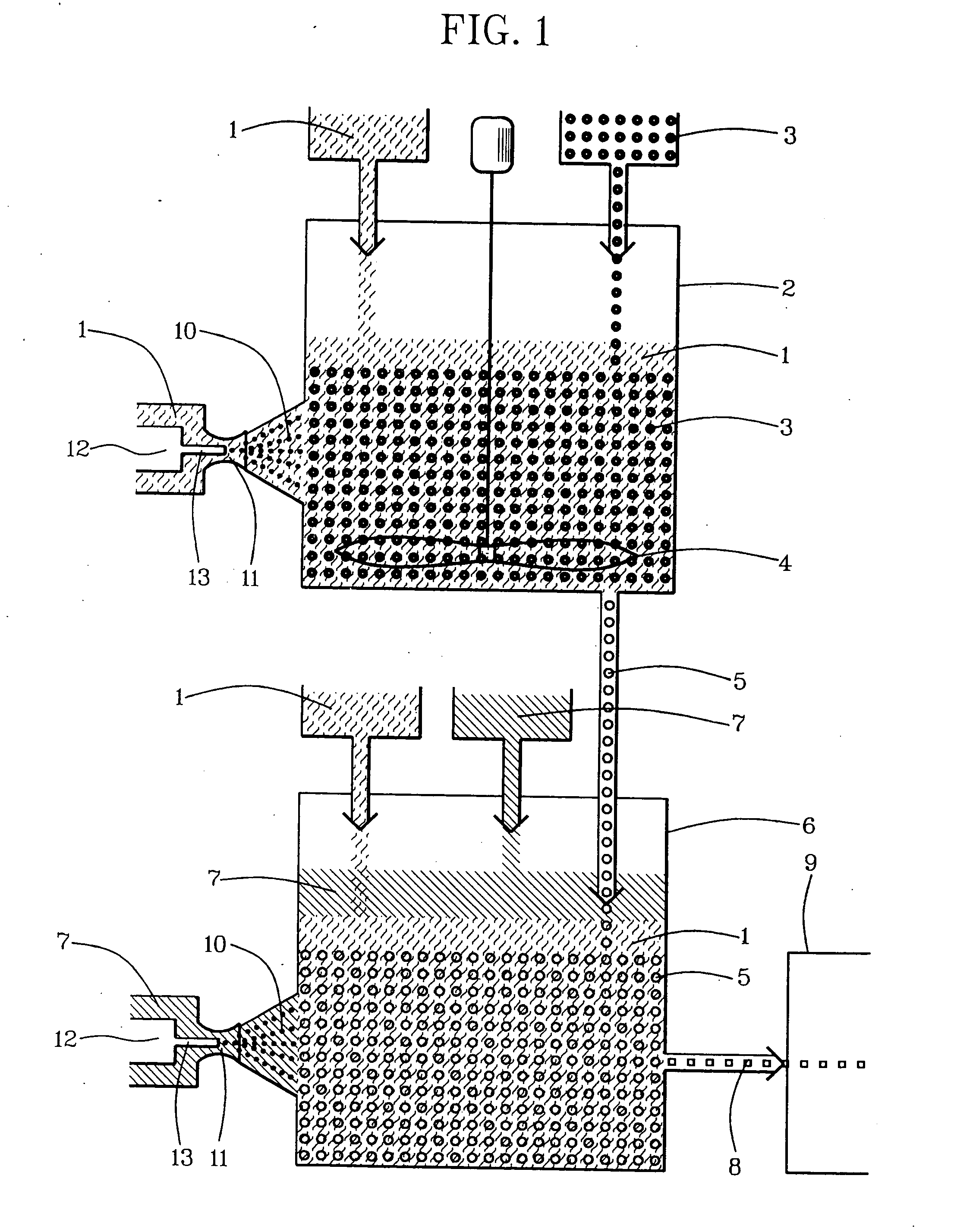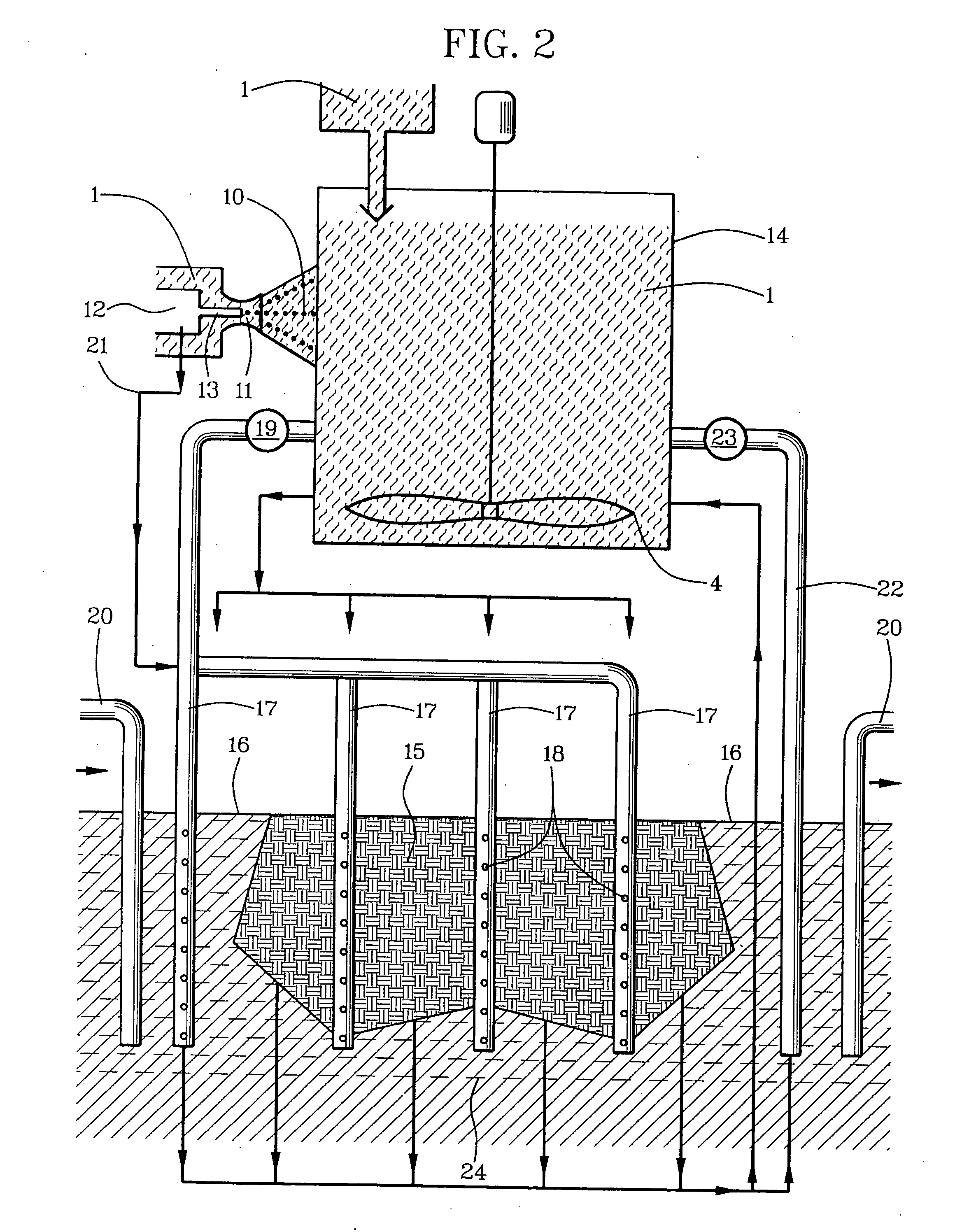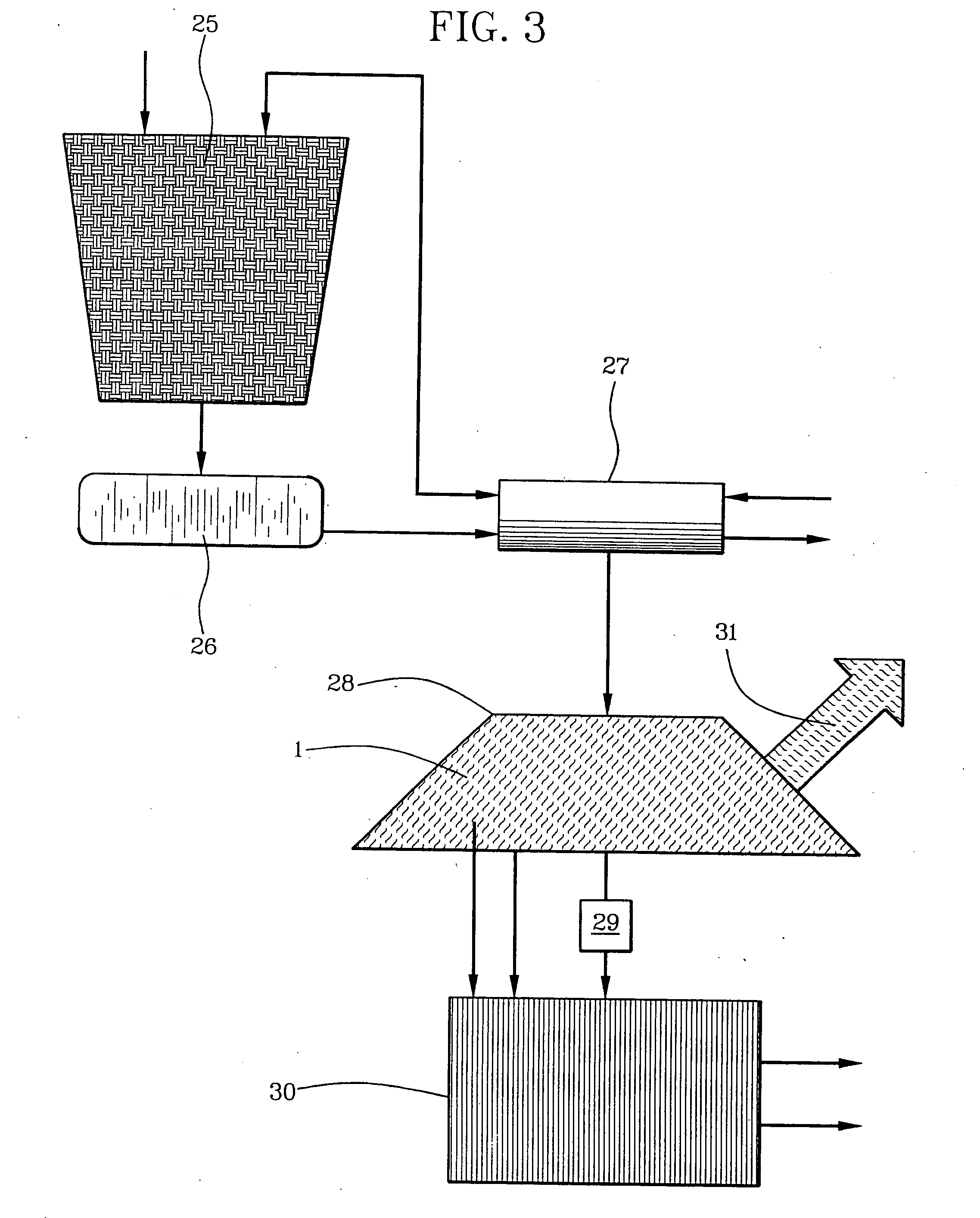Contaminant eco-remedy and use method
a technology which is applied in the field of contaminant eco-remedy and use method, can solve the problems of contamination materials and organics being hazardous in nature, chemicals entering the environment, and wastage being toxic and persistent in the environmen
- Summary
- Abstract
- Description
- Claims
- Application Information
AI Technical Summary
Problems solved by technology
Method used
Image
Examples
Embodiment Construction
[0030] Listed numerically below with reference to the drawings are terms used to describe features of this invention. These terms and numbers assigned to them designate the same features throughout this description.
1. Contaminant eco-remedy 2. Treatment tank 3. Untreated organic waste 4. Agitator 5. Treated organic waste 6. Retention tank 7. Water 8. Bioremedied waste 9. Disposition site10. Air11. Venturi nozzle12. Pressurization source13. Air tube14. System tank15. Target soil16. Area17. Injector tube18. Injection orifices19. Fluid pump20. Monitoring well21. Air conveyance22. Extraction well23. Extraction pump24. Underground water25. Contaminated soil26. Pan feeder27. Trommel screen28. Customized tank29. Custom agitator30. Press31. Water-phase eco-remedy
[0031] This invention provides an environmentally-safe remedy and methods for its use to degrade chemically and biologically chemical contamination of the environment and items in it. The environmentally-safe remedy is referred t...
PUM
 Login to View More
Login to View More Abstract
Description
Claims
Application Information
 Login to View More
Login to View More - R&D
- Intellectual Property
- Life Sciences
- Materials
- Tech Scout
- Unparalleled Data Quality
- Higher Quality Content
- 60% Fewer Hallucinations
Browse by: Latest US Patents, China's latest patents, Technical Efficacy Thesaurus, Application Domain, Technology Topic, Popular Technical Reports.
© 2025 PatSnap. All rights reserved.Legal|Privacy policy|Modern Slavery Act Transparency Statement|Sitemap|About US| Contact US: help@patsnap.com



